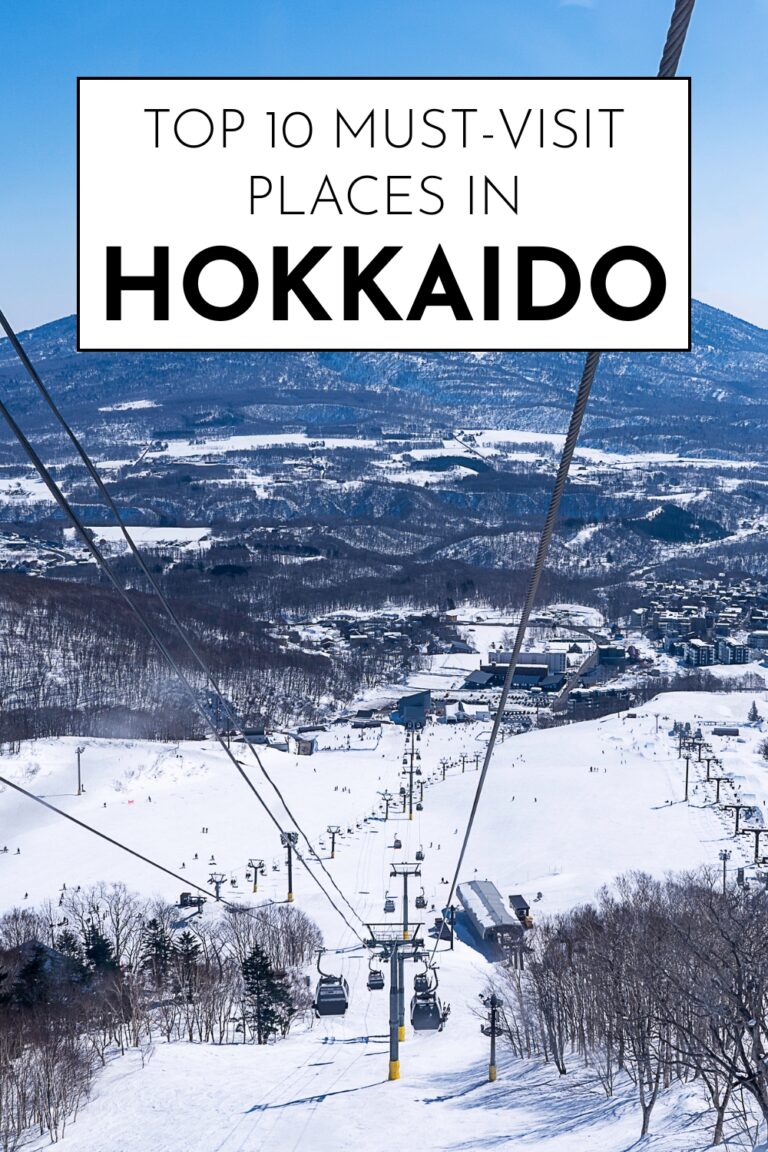Hokkaido, Japan’s northernmost island, offers a stunning blend of pristine wilderness, world-class skiing, incredible seafood, and unique cultural experiences. This island paradise captivates visitors with its dramatic seasonal changes, from snow-covered winters perfect for powder skiing to vibrant summers filled with colorful flower fields and outdoor adventures.
Known for its untouched natural beauty and distinct culture, Hokkaido feels like a different world compared to mainland Japan. The island boasts some of the country’s most spectacular national parks, hottest hot springs, and freshest seafood. Whether you’re seeking powder snow adventures, natural hot spring relaxation, or culinary discoveries, Hokkaido delivers experiences you won’t find anywhere else in Japan.
From volcanic landscapes and crystal-clear lakes to charming European-style towns and world-famous ramen, Hokkaido presents a perfect mix of natural wonders and cultural attractions that create unforgettable memories for every type of traveler.
Let’s explore the ten most incredible destinations that make Hokkaido an essential stop on any Japan adventure.
1. Sapporo – The Vibrant Capital City
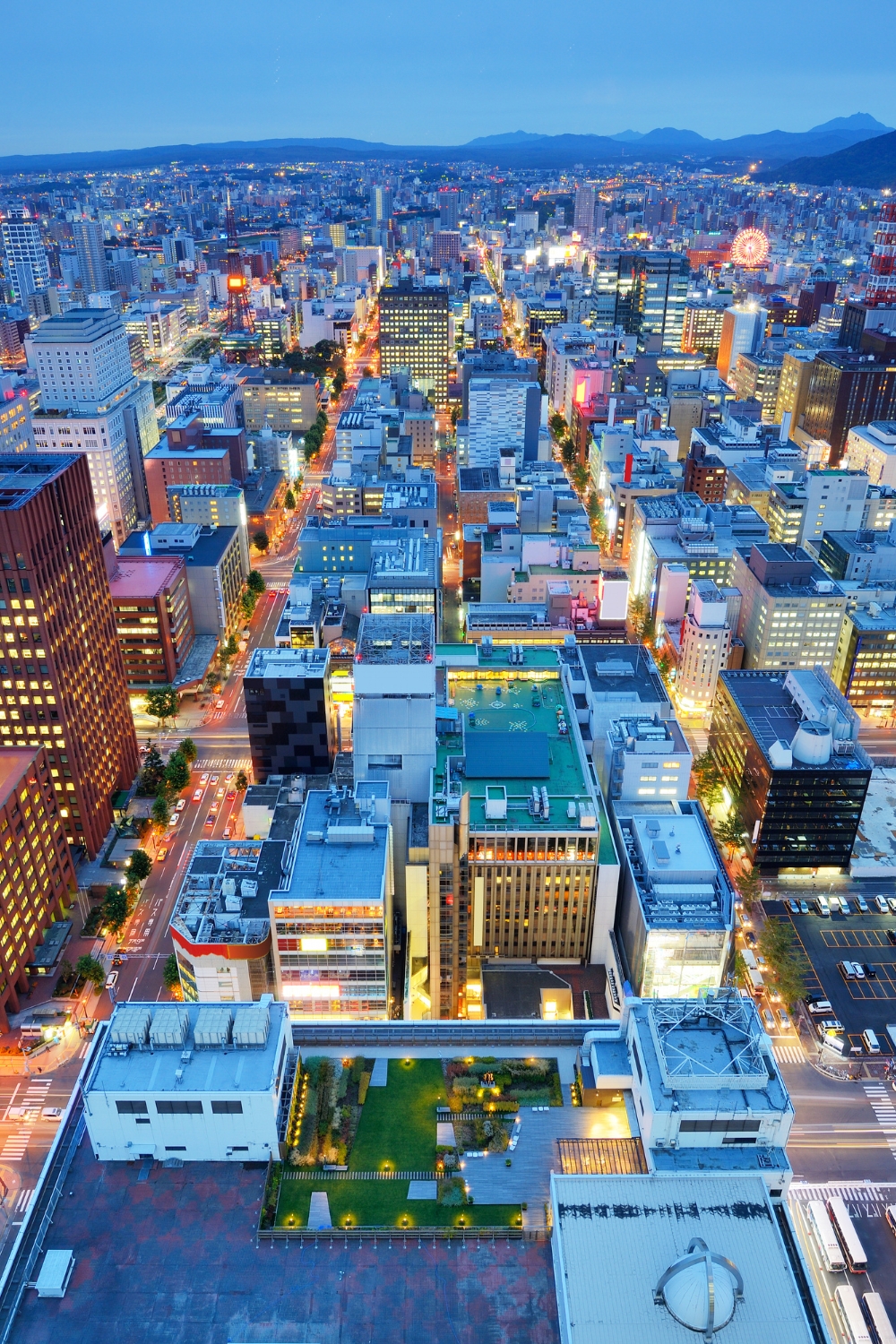
Sapporo, Hokkaido’s largest city and capital, combines urban sophistication with easy access to natural attractions. This modern metropolis gained international recognition as host of the 1972 Winter Olympics and continues to attract visitors with its excellent food scene, historic breweries, and festival celebrations.
Historic Susukino District and Nightlife
The Susukino entertainment district comes alive after dark with thousands of restaurants, bars, and clubs creating one of Japan’s most vibrant nightlife scenes. Neon signs illuminate the streets while the aroma of grilled seafood and ramen draws hungry visitors into cozy establishments.
Susukino offers everything from high-end sushi restaurants to casual izakayas (Japanese pubs) serving Hokkaido’s famous seafood. The district’s narrow alleys hide intimate bars where locals and travelers mingle over Sapporo beer and regional specialties.
Sapporo Beer Garden and Brewing Heritage
The Sapporo Beer Garden and Museum showcase the city’s brewing heritage dating back to 1876. Visitors can tour the historic brewery, learn about beer-making processes, and sample fresh beer straight from the source.
The beer garden experience includes all-you-can-eat Genghis Khan (grilled lamb) paired with unlimited beer in a festive atmosphere. This unique combination of Hokkaido lamb and local beer creates an authentic Sapporo dining experience.
Best time to visit: Year-round, winter illuminations spectacular
Key highlights: Susukino district, Sapporo Beer Garden, Odori Park
Getting around: Efficient subway system, walkable city center
2. Niseko – World-Class Powder Snow Paradise

Niseko has earned international recognition as one of the world’s premier ski destinations, attracting powder enthusiasts from around the globe. The area receives an average of 15 meters of snow annually, creating consistently excellent skiing conditions throughout the winter season.
Unrivaled Powder Snow and Skiing
Niseko’s four interconnected ski resorts offer diverse terrain suitable for all skill levels. The legendary powder snow, created by cold Siberian winds picking up moisture from the Sea of Japan, provides an almost weightless skiing experience that many consider the best in the world.
Advanced skiers can explore off-piste areas and backcountry terrain, while beginners enjoy gentle slopes and excellent ski schools. The resorts’ high-speed lifts and modern facilities ensure comfortable access to over 2,000 acres of skiable terrain.
International Resort Atmosphere
Unlike traditional Japanese ski areas, Niseko has developed a distinctly international character with English-speaking staff, international restaurants, and luxury accommodations. This global atmosphere attracts visitors from Australia, Europe, and North America.
The resort village offers diverse dining options, from traditional Japanese restaurants to international cuisine, luxury spas, and lively après-ski venues. Summer activities include hiking, mountain biking, and hot air balloon rides over the scenic landscape.
Snow season: December to April
Best powder: January to March
Activities: Skiing, snowboarding, hot springs, summer hiking
International access: New Chitose Airport 2 hours by bus
3. Hakodate – Historic Port City Charm
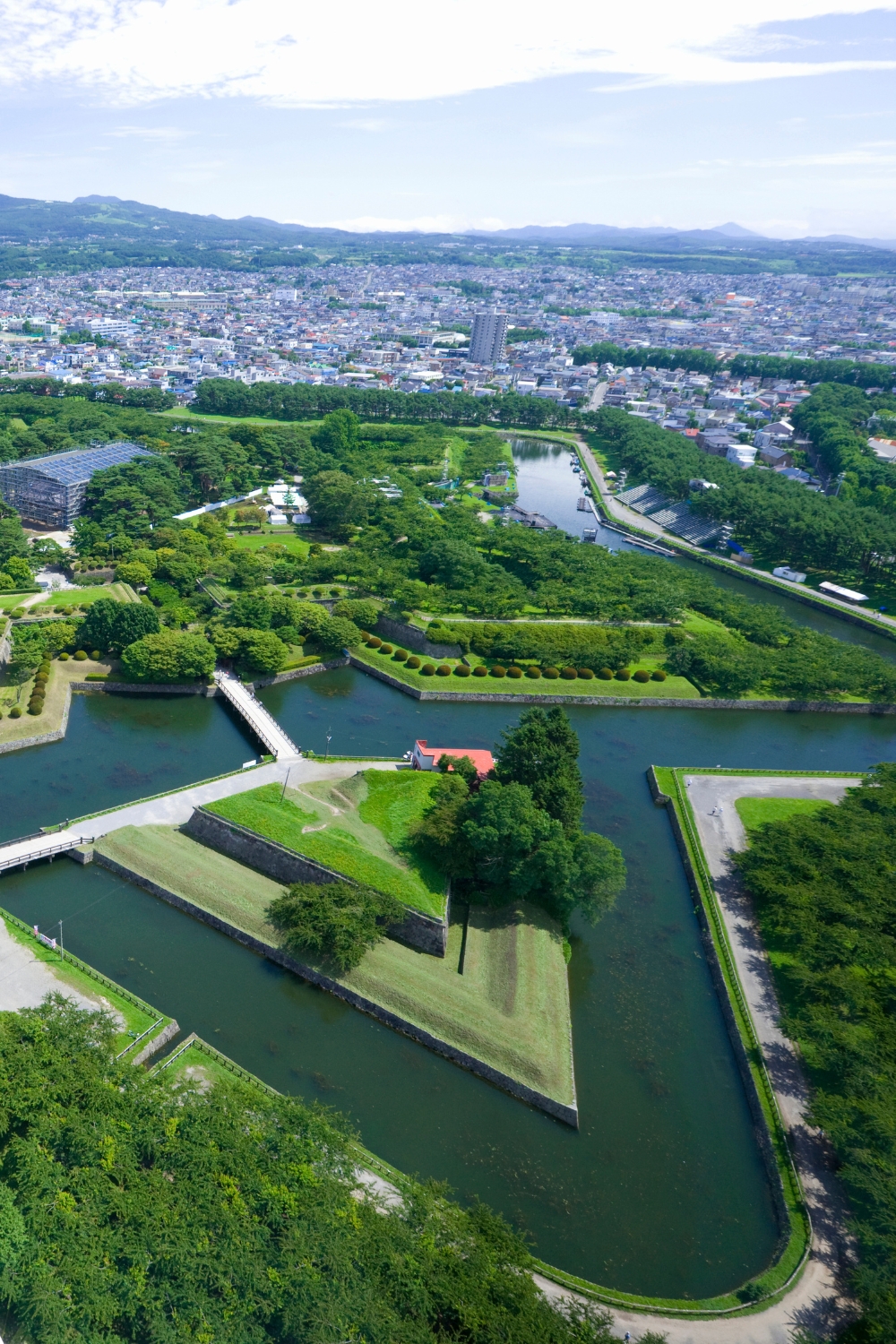
Hakodate, located on Hokkaido’s southern tip, combines historic architecture, incredible seafood, and stunning harbor views. This former international trading port maintains its multicultural heritage through Western-influenced buildings and diverse culinary traditions.
Mount Hakodate Night Views
Mount Hakodate offers one of Japan’s three most beautiful night views, with the city’s lights creating a spectacular arc between two bays. The ropeway to the summit provides year-round access, though winter visits require warm clothing for the outdoor observation deck.
The distinctive hourglass shape of the city lights, framed by Hakodate Bay and Tsugaru Strait, creates a unique panorama that changes with the seasons. Summer evenings offer comfortable viewing conditions, while winter nights provide crystal-clear visibility.
Hakodate Morning Market and Fresh Seafood
The Hakodate Morning Market (Asaichi) serves as Hokkaido’s premier seafood destination, operating since 1945. Over 160 vendors sell the freshest catches from local waters, including sea urchin, king crab, salmon, and squid.
The famous kaisendon (seafood rice bowls) feature incredibly fresh sashimi over rice, often including multiple types of seafood in generous portions. Many visitors experience catching their own squid from tanks and having it prepared immediately.
Best viewing time: 30 minutes before sunset to 1 hour after
Market hours: 5 AM to 12 PM, busiest 6-8 AM
Specialty foods: Fresh seafood, kaisendon, Hakodate ramen
Historic sites: Goryokaku Park, Western-style buildings
4. Furano and Biei – Flower Fields and Rolling Hills
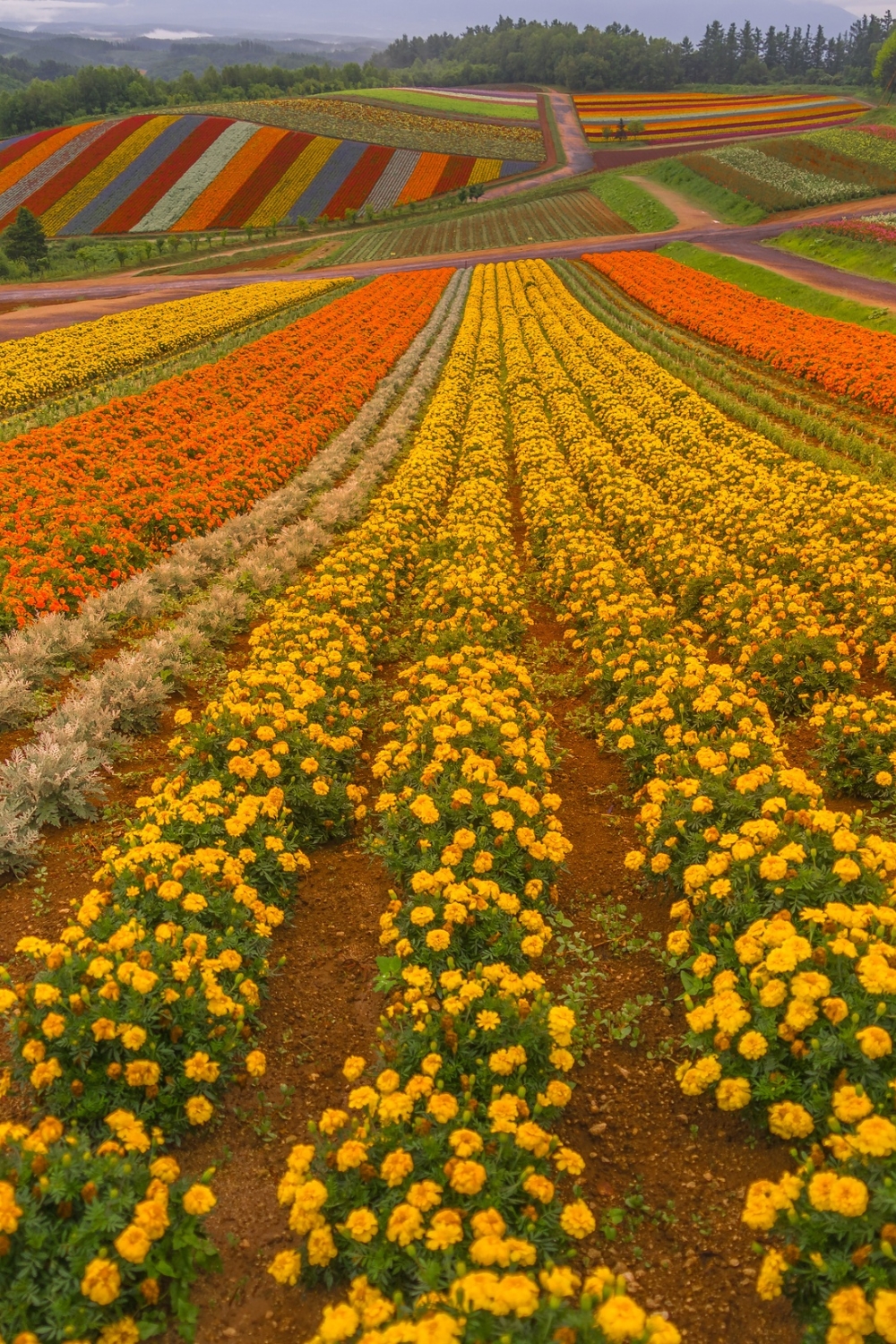
The Furano and Biei region transforms into a colorful paradise during summer months, with vast flower fields and rolling agricultural hills creating some of Japan’s most photographed landscapes. This area offers a stark contrast to Hokkaido’s winter image, showcasing the island’s incredible seasonal diversity.
Lavender Fields and Flower Festivals
Furano’s lavender fields bloom from mid-June to early August, creating purple carpets that stretch to the horizon. Farm Tomita, the most famous lavender farm, offers multiple flower varieties, local lavender products, and picture-perfect viewing opportunities.
The rainbow flower fields combine lavender with other colorful blooms including poppies, cosmos, and sunflowers. These carefully planned displays create natural artwork that changes throughout the growing season.
Biei’s Patchwork Hills and Photography
Biei’s rolling hills feature a patchwork of agricultural fields that create natural geometric patterns visible from scenic viewpoints. Different crops and seasonal changes produce an ever-changing landscape that attracts photographers and nature lovers.
The Blue Pond (Aoiike) near Biei displays an ethereal blue color created by natural minerals in the water. This Instagram-famous location offers stunning photography opportunities, especially during autumn when surrounding trees turn golden.
Best flower season: Late June to early August
Key locations: Farm Tomita, Shikisai-no-Oka, Blue Pond
Activities: Flower viewing, photography, hot air balloon rides
Getting there: JR Furano Line from Sapporo (2.5 hours)
5. Otaru – Romantic Canal Town
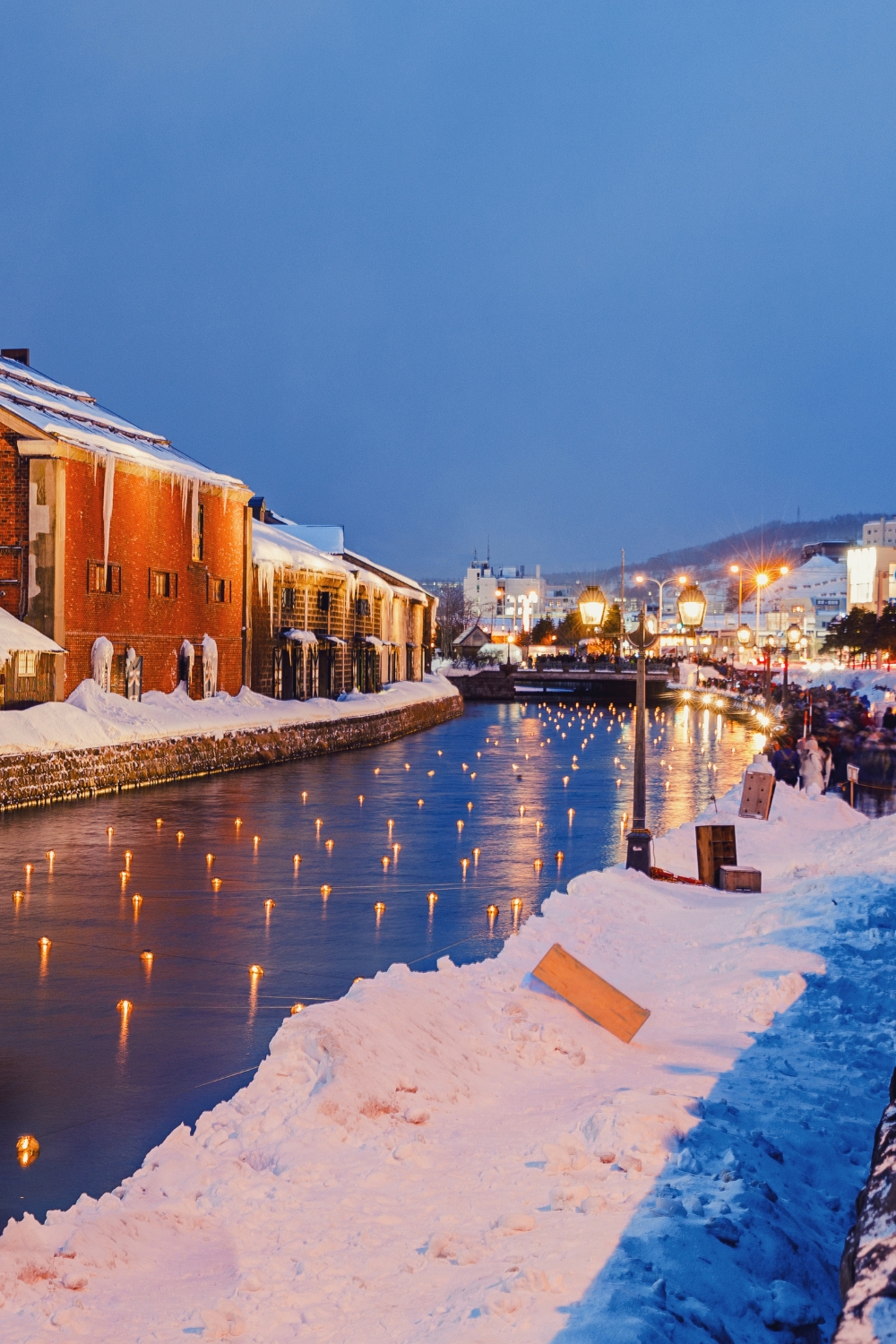
Otaru’s historic canal district and preserved architecture create one of Japan’s most romantic small cities. This former trading port maintains its early 20th-century character through carefully preserved buildings, historic warehouses, and gas-lit streets.
Historic Canal and Glassworks Heritage
The Otaru Canal, lined with historic stone warehouses converted into restaurants and shops, creates the city’s most iconic scene. Evening visits offer the most atmospheric experience as gas lamps illuminate the canal and surrounding buildings.
Otaru’s glassworks heritage dates back to its fishing industry, when glass floats were essential equipment. Today, numerous glass workshops and galleries showcase both traditional and contemporary glass art, offering hands-on experiences for visitors.
Music Box Museum and Unique Shopping
The Otaru Music Box Museum houses the world’s largest collection of music boxes, with over 25,000 pieces ranging from antique European designs to modern Japanese creations. The main building, housed in a beautiful historic structure, offers music box making workshops.
Sakaimachi Street provides excellent shopping for local crafts, glassware, and souvenirs. The preserved architecture and unique shops create a nostalgic atmosphere that transports visitors to Japan’s Meiji period.
Best time to visit: Evening for romantic canal views
Key attractions: Historic canal, glassworks, music box museum
From Sapporo: 30 minutes by train
Special events: Snow Light Path Festival (February)
6. Shiretoko National Park – UNESCO World Heritage Wilderness
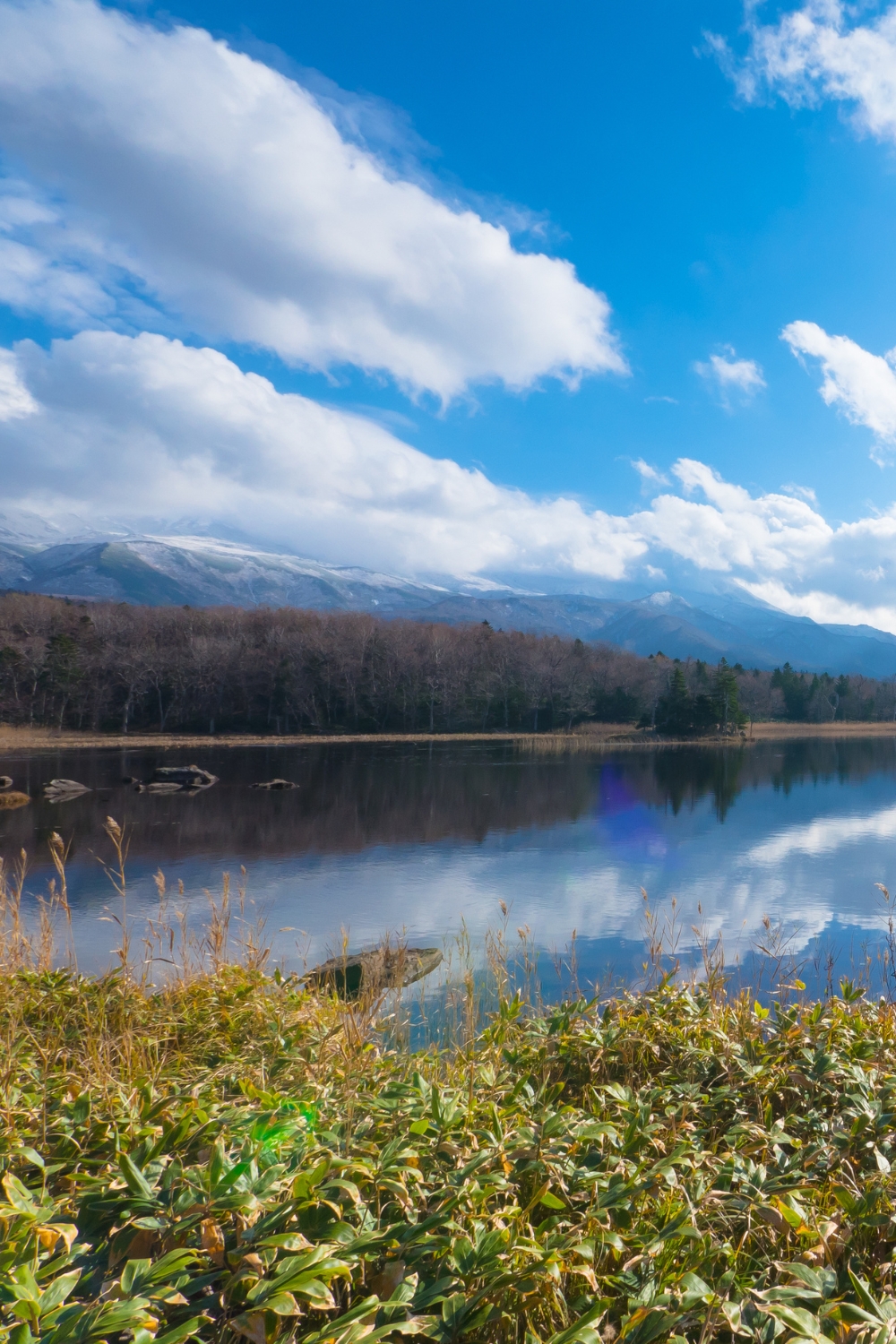
Shiretoko National Park, designated as a UNESCO World Heritage Site, protects one of Japan’s last pristine wilderness areas. This remote peninsula offers incredible wildlife viewing, untouched forests, and dramatic coastal scenery accessible only by boat or challenging hiking trails.
Brown Bear Habitat and Wildlife Viewing
Shiretoko supports Japan’s largest brown bear population, with over 500 bears roaming the peninsula. Guided wildlife tours provide safe opportunities to observe these magnificent creatures along with red foxes, Steller’s sea eagles, and rare seabirds.
The park’s marine environment supports diverse wildlife including orcas, seals, and dolphins. Boat tours from Utoro offer the best wildlife viewing opportunities while showcasing the peninsula’s dramatic cliffs and waterfalls.
Pristine Nature and Hiking Adventures
The park’s hiking trails range from easy coastal walks to challenging mountain climbs requiring proper preparation and experience. The Shiretoko Five Lakes trail offers accessible wilderness experiences with stunning mountain and lake views.
Winter transforms the landscape into a white wilderness where drift ice reaches the shore, creating unique ice-walking experiences. The seasonal changes provide completely different park experiences throughout the year.
Best wildlife season: May to October
Key activities: Wildlife viewing, hiking, boat tours
Access: Fly to Memanbetsu Airport, then 2 hours by bus
Important: Book guided tours in advance, bear safety essential
7. Noboribetsu Onsen – Hot Spring Heaven
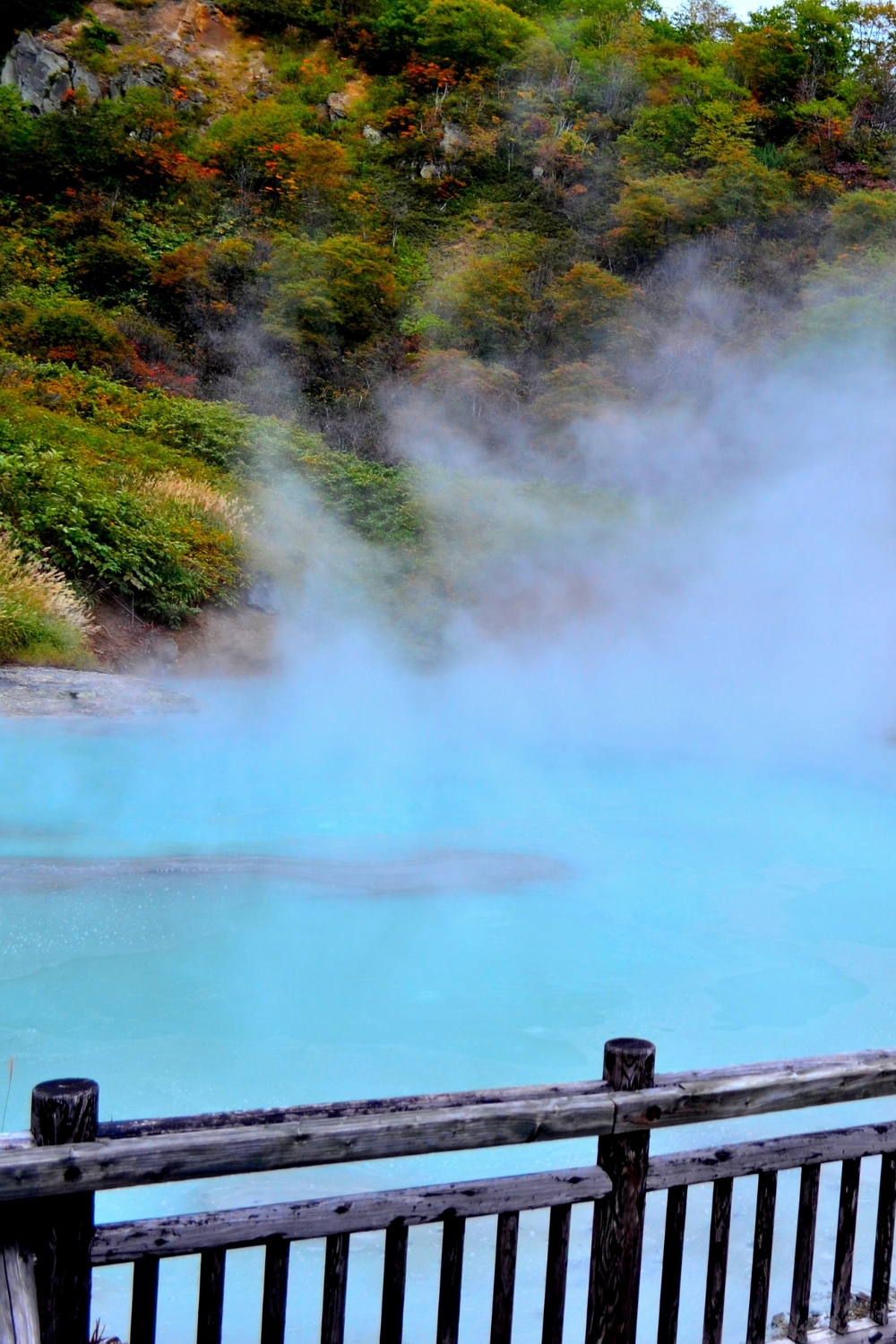
Noboribetsu Onsen ranks among Japan’s most famous hot spring destinations, offering diverse mineral waters and dramatic volcanic landscapes. This spa town provides the perfect combination of relaxation and natural wonder, with hot springs fed by the active Jigokudani (Hell Valley) geothermal area.
Jigokudani Hell Valley Volcanic Landscape
Jigokudani creates an otherworldly landscape with steaming vents, bubbling pools, and sulfur-rich hot springs emerging from the earth. Walking trails through this volcanic wonderland offer incredible views and photo opportunities.
The valley supplies hot water to numerous onsen resorts, each featuring different mineral compositions and therapeutic properties. The dramatic landscape, especially beautiful during winter snow, demonstrates nature’s incredible power.
Traditional Onsen Culture and Relaxation
Noboribetsu’s hot spring hotels and public baths offer authentic Japanese onsen experiences with proper etiquette and tradition. Many resorts feature multiple baths with different mineral properties, outdoor rotenburo (open-air baths), and relaxation areas.
The town’s onsen culture extends beyond bathing to include traditional kaiseki dining, yukata (cotton kimono) wearing, and meditation spaces. This comprehensive spa experience provides deep relaxation and cultural immersion.
Best time to visit: Year-round, winter offers snowy landscapes
Key attractions: Jigokudani Hell Valley, traditional onsen resorts
From Sapporo: 1 hour by train
Onsen etiquette: Wash before entering, no tattoos in some locations
8. Kushiro and Kushiro Wetlands – Crane Sanctuary
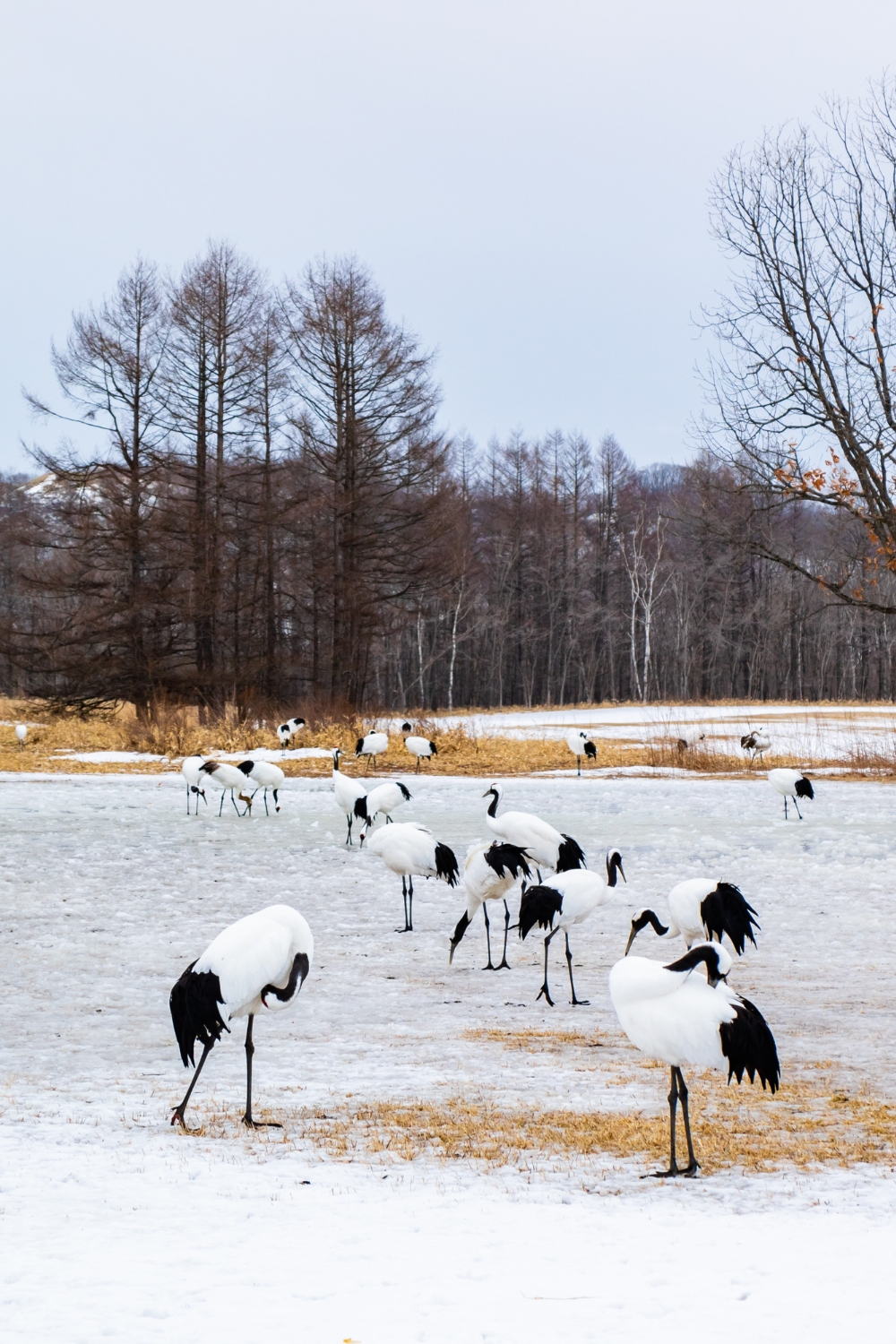
Kushiro and the surrounding wetlands provide sanctuary for Japan’s iconic red-crowned cranes while offering incredible wildlife viewing and pristine marsh landscapes. This eastern Hokkaido destination combines rare wildlife encounters with traditional Japanese culture.
Red-Crowned Crane Viewing and Photography
The Kushiro Wetlands support Japan’s largest population of red-crowned cranes, considered sacred birds in Japanese culture. Winter crane viewing offers the most spectacular opportunities as the birds gather in feeding areas and perform their famous mating dances.
Professional photography tours provide optimal viewing opportunities with expert guides who know crane behavior and best locations. The sight of these elegant birds against snow-covered landscapes creates unforgettable memories and stunning photographs.
Vast Wetland Ecosystem and Nature Walks
The Kushiro Wetlands span over 26,000 hectares, representing Japan’s largest wetland ecosystem. Elevated boardwalks and observation towers provide access to this pristine environment while protecting sensitive habitats.
Canoeing through the wetlands offers intimate wildlife encounters and peaceful nature experiences. The slow-moving Kushiro River provides easy paddling conditions suitable for beginners while showcasing the area’s incredible biodiversity.
Best crane viewing: December to February
Activities: Wildlife viewing, photography, canoeing, nature walks
Getting there: Fly to Kushiro Airport or take JR from Sapporo
Photography: Bring telephoto lens for best crane photos
9. Asahikawa and Daisetsuzan National Park – Alpine Adventures
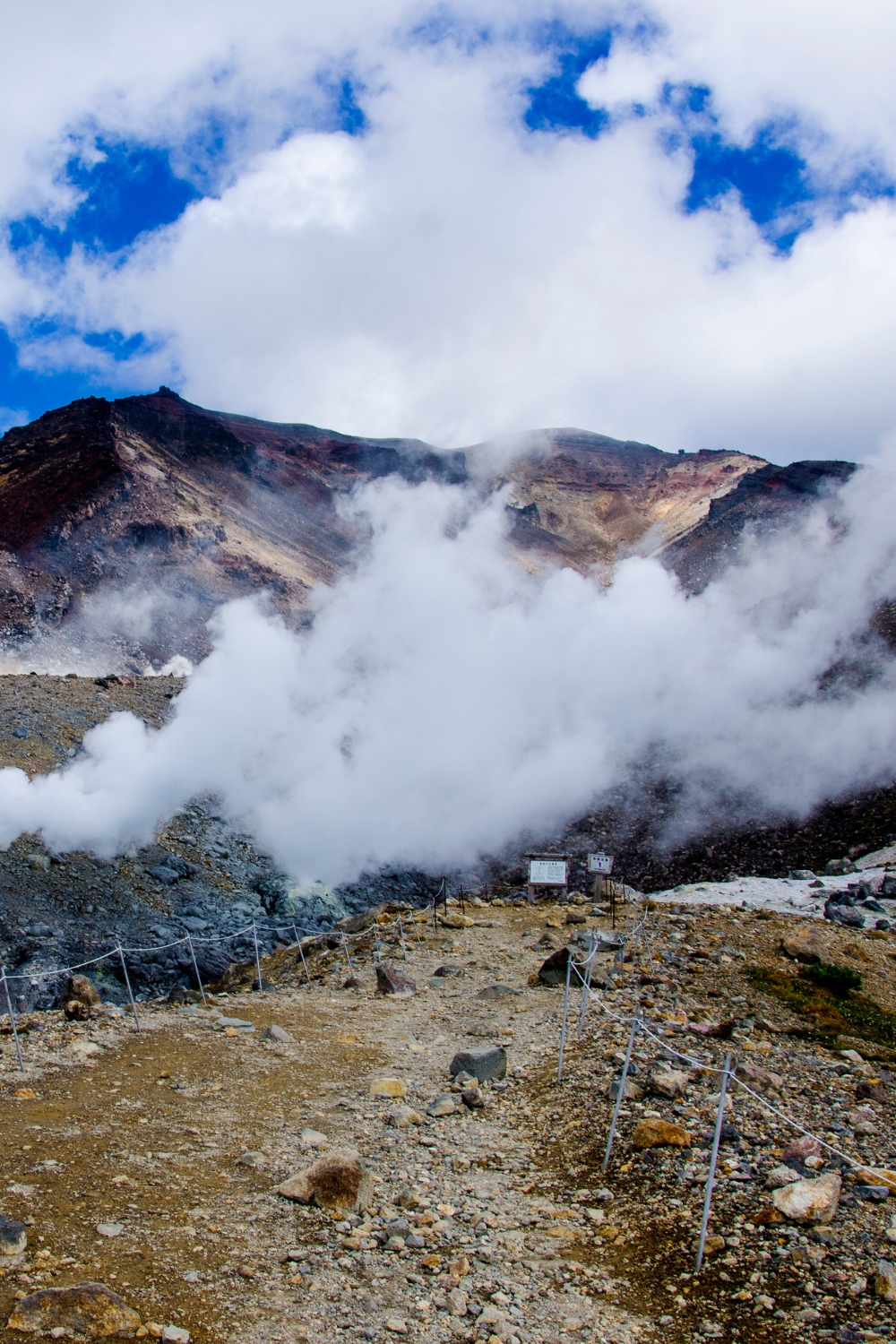
Asahikawa serves as the gateway to Daisetsuzan National Park, Japan’s largest national park, offering incredible alpine hiking, pristine wilderness, and stunning mountain scenery. This central Hokkaido destination provides year-round outdoor adventures and some of Japan’s most spectacular mountain landscapes.
Daisetsuzan National Park Mountain Hiking
Daisetsuzan’s 2,267 square kilometers encompass multiple mountain ranges, alpine lakes, and pristine wilderness areas. The park offers hiking trails ranging from easy day walks to challenging multi-day treks requiring mountaineering experience.
The Asahidake area features Hokkaido’s highest peak at 2,291 meters, accessible via cable car for stunning 360-degree views. Alpine flower meadows bloom briefly during summer, creating colorful displays at high elevations.
Asahikawa City and Local Culture
Asahikawa combines urban amenities with easy access to natural attractions. The city’s most famous attraction is Asahiyama Zoo, known for innovative exhibits that allow natural animal behavior observation.
Local ramen culture thrives in Asahikawa, with the city claiming to be the birthplace of shoyu (soy sauce) ramen. The rich, porky broth topped with bamboo shoots and green onions provides perfect comfort food after mountain adventures.
Best hiking season: July to September
Key attractions: Asahidake, Asahiyama Zoo, ramen culture
From Sapporo: 1.5 hours by train
Mountain safety: Weather changes rapidly, proper gear essential
10. Lake Toya – Volcanic Crater Lake Beauty
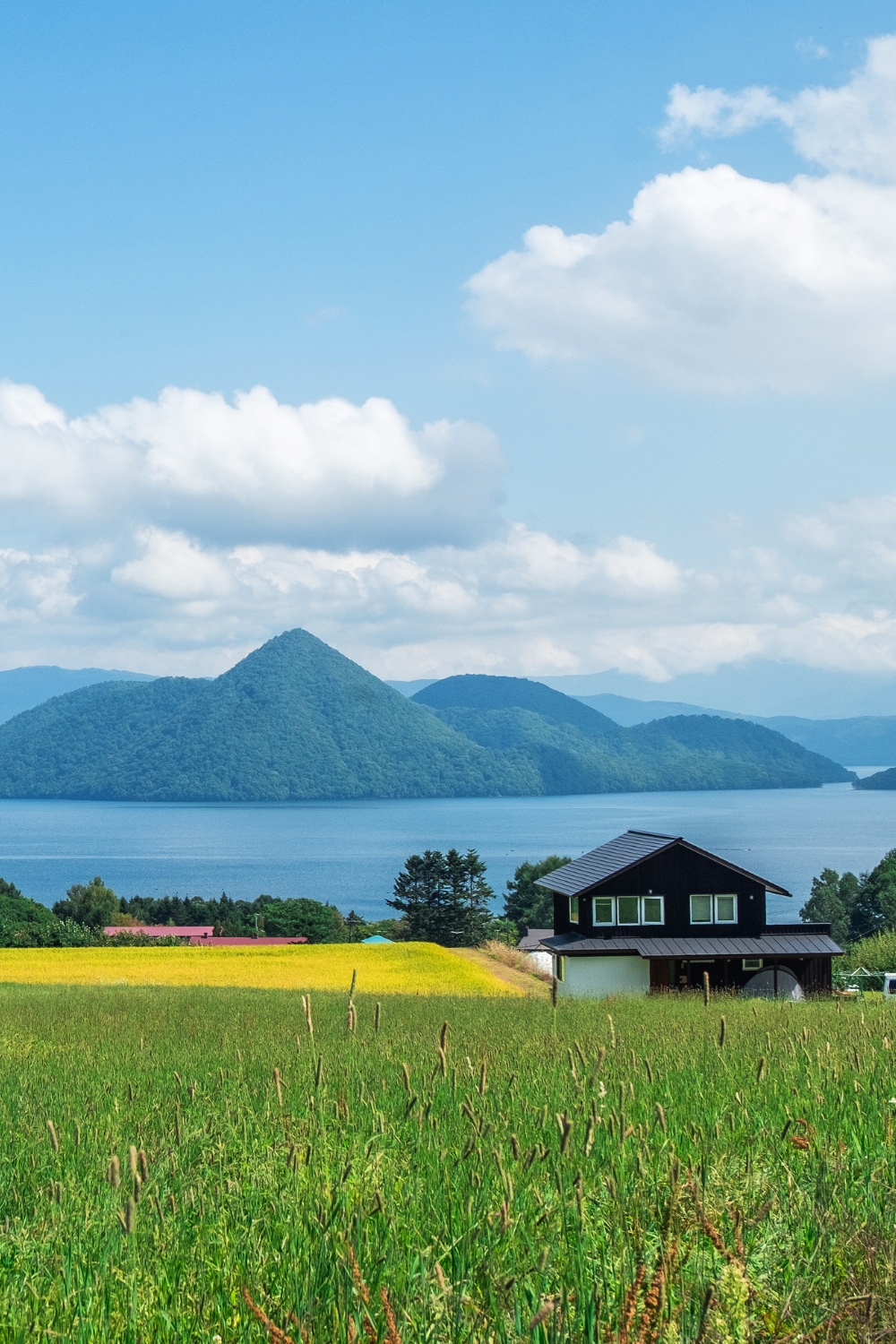
Lake Toya, formed by volcanic activity 110,000 years ago, creates one of Hokkaido’s most beautiful natural attractions. This nearly circular crater lake offers hot springs, scenic boat rides, and stunning mountain views in a peaceful setting perfect for relaxation and nature appreciation.
Crater Lake Scenic Beauty and Activities
The lake’s crystal-clear waters reflect surrounding mountains and sky, creating picture-perfect scenery that changes with seasons and weather conditions. Boat tours provide the best perspectives of the lake’s circular shape and central islands.
The lake never freezes due to its depth and geothermal activity, making it accessible year-round. Summer offers swimming, fishing, and water sports, while winter provides serene snow-covered landscapes and clear views.
Lakeside Hot Springs and Relaxation
Multiple hot spring resorts line the lake’s shore, offering spectacular views while soaking in mineral-rich waters. Many hotels feature outdoor baths where guests can enjoy lake views while relaxing in hot springs.
The area’s volcanic activity creates diverse hot spring types with different mineral compositions and therapeutic properties. This combination of scenic beauty and relaxation makes Lake Toya a perfect destination for rest and rejuvenation.
Best time to visit: Year-round, autumn foliage spectacular
Activities: Hot springs, boat tours, hiking, scenic drives
From Sapporo: 2 hours by train and bus
Special feature: Lake never freezes, year-round access
Planning Your Hokkaido Adventure
Getting Around Hokkaido
Hokkaido’s size requires careful transportation planning. The JR Hokkaido Rail Pass offers unlimited travel on JR trains throughout the island, making it cost-effective for multi-destination trips. Car rental provides maximum flexibility for reaching remote areas and scenic drives.
Domestic flights connect major cities like Sapporo, Asahikawa, and Kushiro, saving time for longer distances. Local buses serve smaller destinations, though schedules can be limited in rural areas.
Best Time to Visit Different Attractions
Winter (December-March): Perfect for skiing, hot springs, and winter festivals. Temperatures are cold but create magical snow landscapes and excellent powder snow conditions.
Summer (June-August): Ideal for hiking, flower viewing, and outdoor activities. Comfortable temperatures and long daylight hours provide excellent conditions for sightseeing.
Spring/Fall (April-May, September-November): Shoulder seasons offer fewer crowds, beautiful seasonal changes, and moderate temperatures. Cherry blossoms come later than mainland Japan.
Cultural Considerations and Local Etiquette
Hokkaido’s culture differs slightly from mainland Japan, with more direct communication and relaxed atmosphere. However, standard Japanese etiquette applies, especially in hot springs and traditional establishments.
Language barriers can be more challenging outside major tourist areas. Learning basic Japanese phrases or using translation apps helps with local interactions and enhances cultural experiences.
Conclusion
Hokkaido offers an incredible diversity of experiences that showcase Japan’s natural beauty, unique culture, and seasonal wonders. From world-class powder snow in Niseko to pristine wilderness in Shiretoko, from historic charm in Otaru to volcanic landscapes in Noboribetsu, each destination reveals different aspects of this remarkable island.
These ten must-visit places represent just the beginning of what Hokkaido has to offer. The island’s greatest appeal lies in its ability to provide both adventure and relaxation, cultural immersion and natural wonder, modern amenities and traditional experiences.
Whether you visit during the snowy winter months or the flower-filled summer season, Hokkaido’s dramatic seasonal changes ensure completely different experiences throughout the year. The combination of excellent food, friendly locals, stunning scenery, and unique activities makes Hokkaido an ideal destination for first-time Japan visitors and experienced travelers alike.
Start planning your Hokkaido adventure today, and prepare to discover why this northern island has captured the hearts of travelers seeking authentic Japanese experiences combined with incredible natural beauty. The land of snow, hot springs, and endless adventure awaits your exploration.
